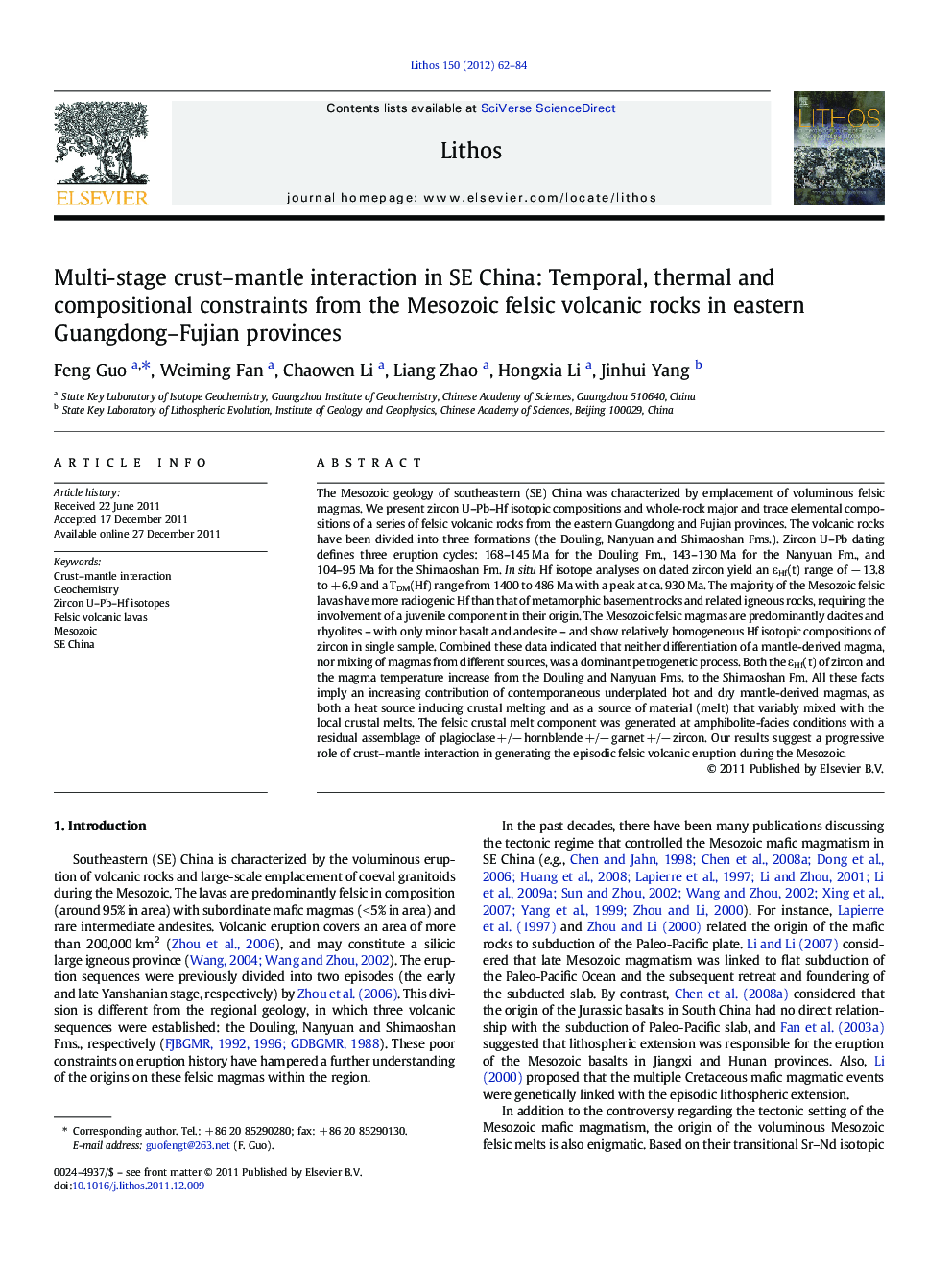| کد مقاله | کد نشریه | سال انتشار | مقاله انگلیسی | نسخه تمام متن |
|---|---|---|---|---|
| 4716489 | 1638703 | 2012 | 23 صفحه PDF | دانلود رایگان |

The Mesozoic geology of southeastern (SE) China was characterized by emplacement of voluminous felsic magmas. We present zircon U–Pb–Hf isotopic compositions and whole-rock major and trace elemental compositions of a series of felsic volcanic rocks from the eastern Guangdong and Fujian provinces. The volcanic rocks have been divided into three formations (the Douling, Nanyuan and Shimaoshan Fms.). Zircon U–Pb dating defines three eruption cycles: 168–145 Ma for the Douling Fm., 143–130 Ma for the Nanyuan Fm., and 104–95 Ma for the Shimaoshan Fm. In situ Hf isotope analyses on dated zircon yield an εHf(t) range of − 13.8 to + 6.9 and a TDM(Hf) range from 1400 to 486 Ma with a peak at ca. 930 Ma. The majority of the Mesozoic felsic lavas have more radiogenic Hf than that of metamorphic basement rocks and related igneous rocks, requiring the involvement of a juvenile component in their origin. The Mesozoic felsic magmas are predominantly dacites and rhyolites – with only minor basalt and andesite – and show relatively homogeneous Hf isotopic compositions of zircon in single sample. Combined these data indicated that neither differentiation of a mantle-derived magma, nor mixing of magmas from different sources, was a dominant petrogenetic process. Both the εHf(t) of zircon and the magma temperature increase from the Douling and Nanyuan Fms. to the Shimaoshan Fm. All these facts imply an increasing contribution of contemporaneous underplated hot and dry mantle-derived magmas, as both a heat source inducing crustal melting and as a source of material (melt) that variably mixed with the local crustal melts. The felsic crustal melt component was generated at amphibolite-facies conditions with a residual assemblage of plagioclase +/− hornblende +/− garnet +/− zircon. Our results suggest a progressive role of crust–mantle interaction in generating the episodic felsic volcanic eruption during the Mesozoic.
► Three stages (168–145 Ma, 143–130 Ma and 104–94 Ma) of volcanic eruption are identified in SE China.
► The Mesozoic felsic lavas were derived from medium- to high-K protoliths.
► The residual assemblage of the felsic melts was plagioclase +/− hornblende +/− garnet +/− zircon.
► The felsic magmas were formed through crust–mantle interaction under lithospheric extension.
Journal: Lithos - Volume 150, 1 October 2012, Pages 62–84